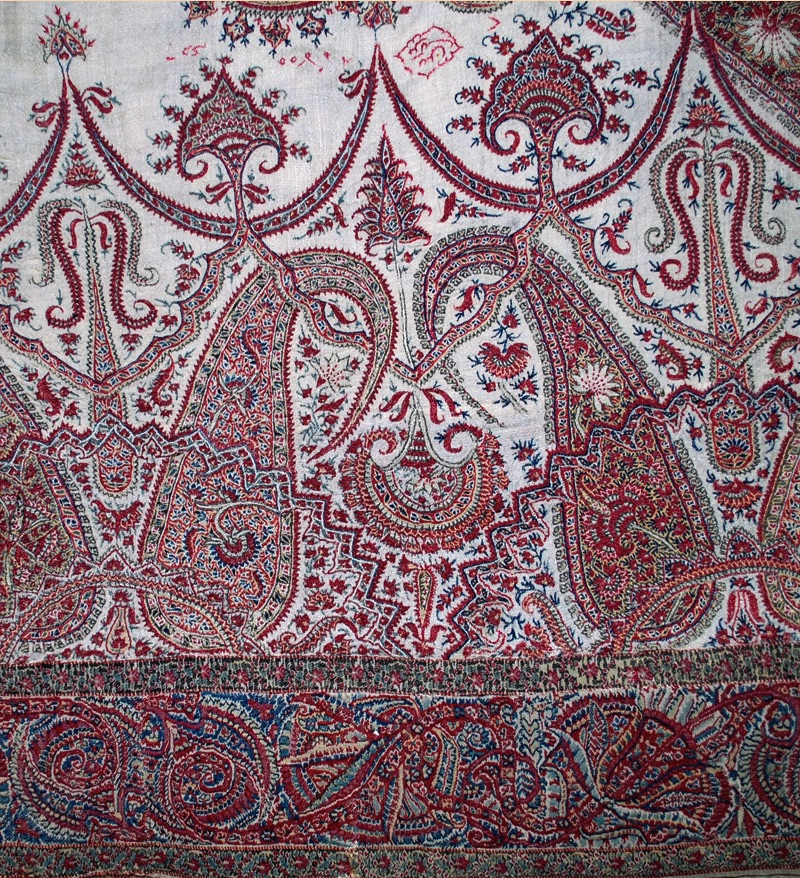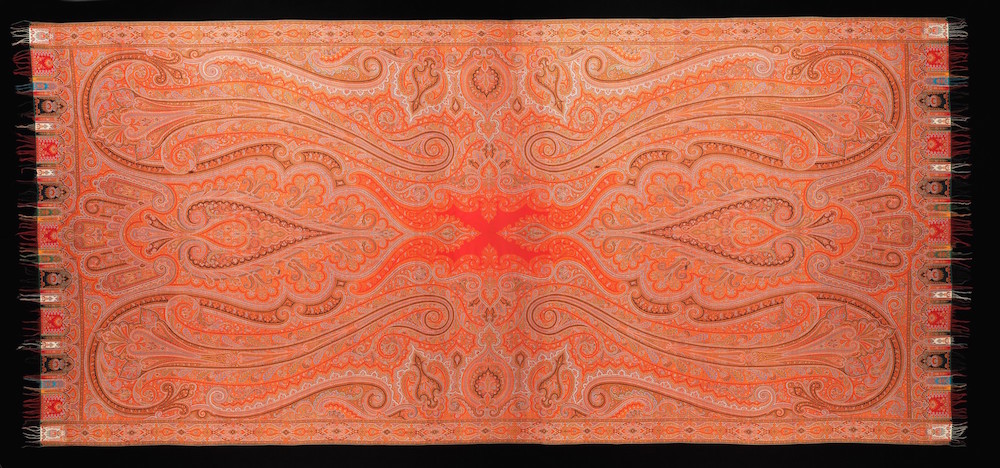Paisley isn't period... | |||||||||||||||||||||||||||||||||||||||||||||||
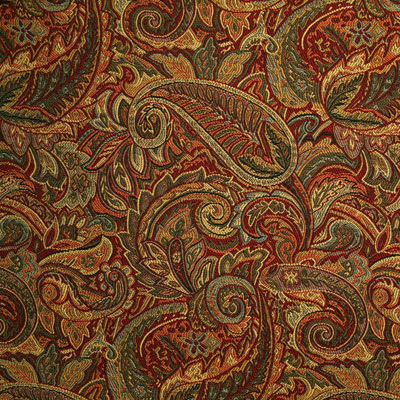 2018 printed paisley fabric |
The "paisley" motif returned to popularity in the 1960s, as young people and fashion designers began looking to different world cultures and to idealized times in history. At first it was a menswear pattern, on neckties and men's shirts. Then it became seen as a psychedelic pattern. |
Boteh, the Real Paisley
The origin of the boteh, the Persian name for the twisted teardrop motif, is much debated. Is it originally Persian or is it Indian? Is it a stylized floral spray or a leaf; is it a cypress, pine, or palm tree, or is it a Zoroastrian tree of life; is it a mango or a fig; is it a flame or a feather; is it half of the T'ai Chi symbol ? I cannot answer. I am collecting Persian examples of the motif called boteh in Persian. I am also looking for examples in garment fabric, not in architecture or carpets.
Historic Fabrics with Boteh
One thing to notice about historical fabrics with boteh is the motifs are arranged in neat rows. The reason is they are woven and one cannot easily make random overlapping shapes when doing, for example, lampas weave. Even when block printing, having the patterns neatly arranged is more satisfying than printing randomly on the cloth. Second, they are arranged so that in each row the motif has the curved bottom down and the curled tip up. Rows may alternate having the curled tip facing left and then right, but they do not vary or alternate the orientation within one row.
Note that the size of the motifs is quite variable and not necessarily related to how they are displayed here. I've included the size of the textile where available.
| Early 16th centuy Persian red silk with silver thread brocade. Fragment size 11" x 5". | 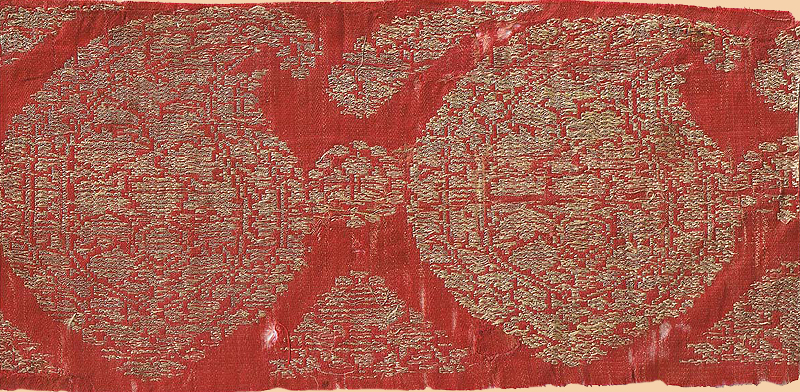 |
| Mid-17th century Persian multi-color silk with metallic threads. Fragment size 27" x 17". |  |
| 17th century Persian silk lampas weave boteh with animals. Fragment size 22-1/2" x 22-3/4". Accession Number: 1922-22-20, Philadelphia Museum of Art. |  |
| 17th century Persian silk damask weave floral Boteh in 3 sizes. Fragment size 28-3/8" x 28-3/4". Accession Number: 1922-22-57, Philadelphia Museum of Art. | 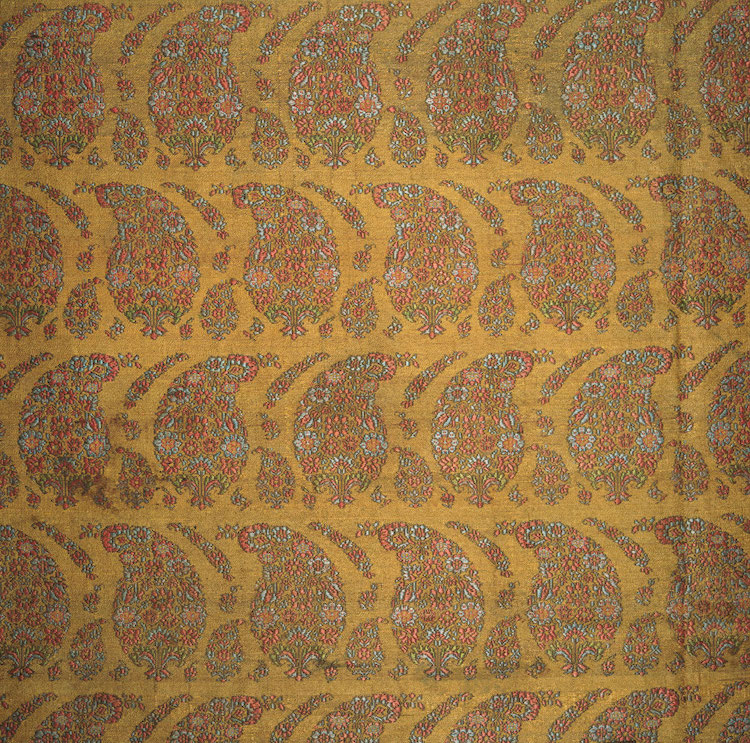 |
| 17th century Persian dark indigo silk with metal thread boteh in stripes. Boteh motif 4-3/8" tall. Textile Museum, Washington, DC. Stripesof boteh alternate with stripes of multi-color flowers. From Arthur Upham Pope, A Survey of Persian Art. |  |
| 17th century Persian red silk with metal thread boteh. Boteh motif 3-15/16" tall. Private collection. Floral boteh in off-set rows. From Arthur Upham Pope, A Survey of Persian Art. | 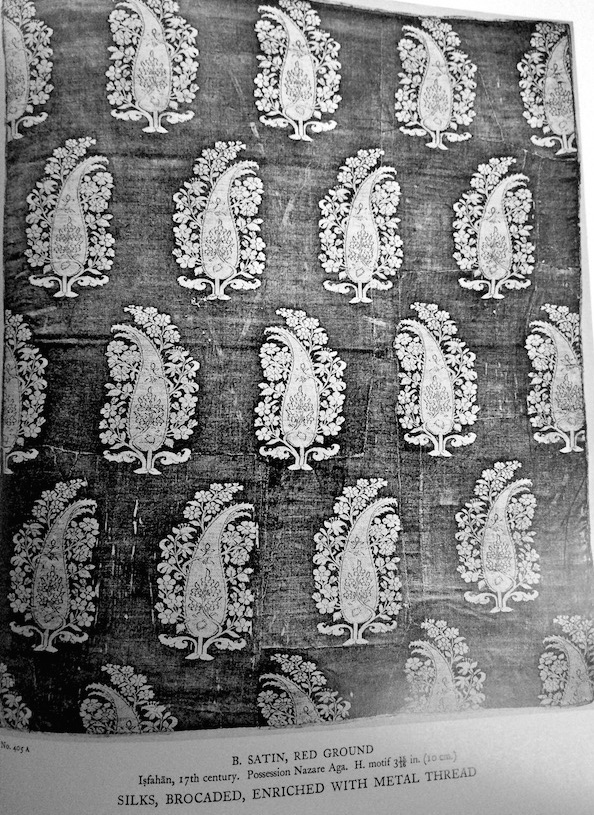 |
| Circa 1700 Persian indigo silk with multi-color and metal thread brocade. Floral boteh in regular rows. Fragment size 26'' x 12''. | 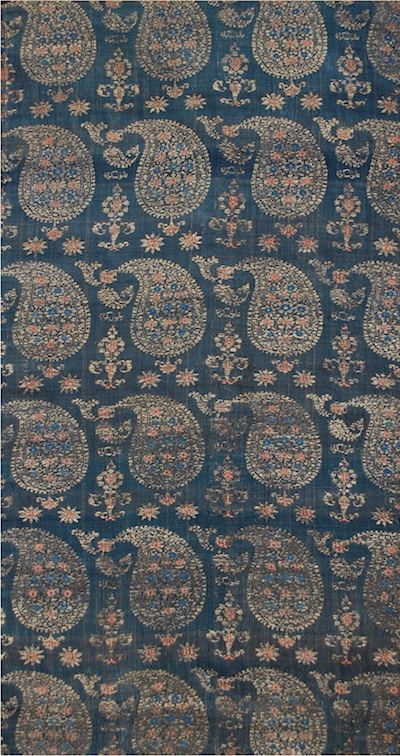 |
| 18th century Persian dark indigo silk with white boteh. Fragment H: 7-13/16", W: 19-3/16"'. Floral boteh in regular rows. Accession Number 1899-10-7. Cooper-Hewitt Museum. | 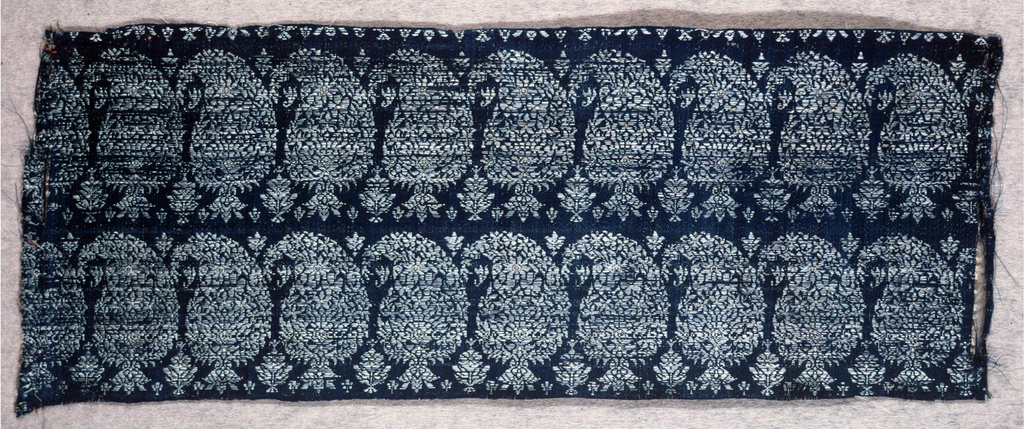
|
| 18th century Persian lampas weave silk with multi-color floral boteh in regular rows. Fragment H: 7" W: 8 3/4". Accession number: 1918.186. Cleveland Museum of Art. | 
|
| 18th century Persian lampas weave silk with multi-color floral boteh in regular rows. Fragment size 19-7/16" x 19-1/4". Accession number: 1915.660. Cleveland Museum of Art. | 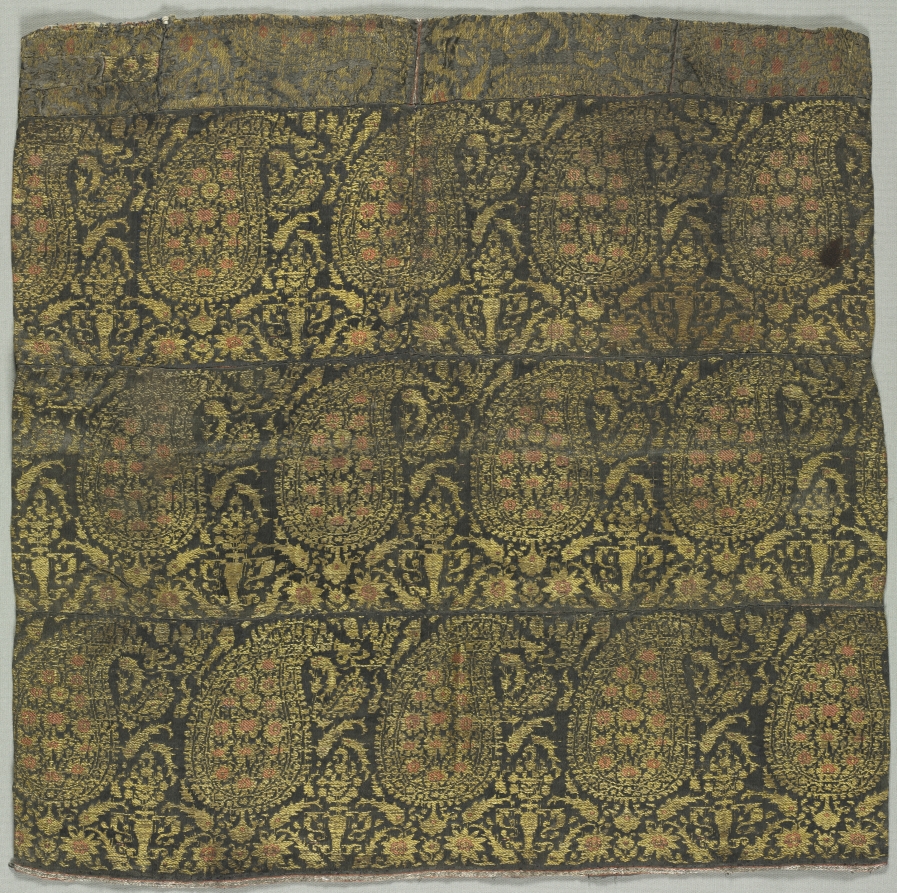
|
| Late 18th century Kashmiri shawl fragment (i.e., not Persian). Cashmere wool ground with tapestry woven motifs. | 
|
| 18th or 19th century (Zand or Qajar dynasty) Persian hat made of hand-printed cotton chintz, finely quilted with stylized cypress tree motifs. Boteh in off-set rows. This style of hat was worn by both men and women. | 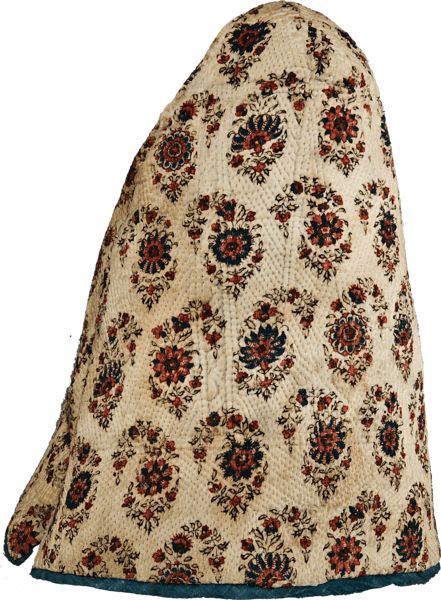
|
| 19th century Persian hat in four sections, white cotton, lined with brown cotton, quilted with red thread, boteh embroidered in green and red silk. Object number 43-12-149. Penn Museum. | 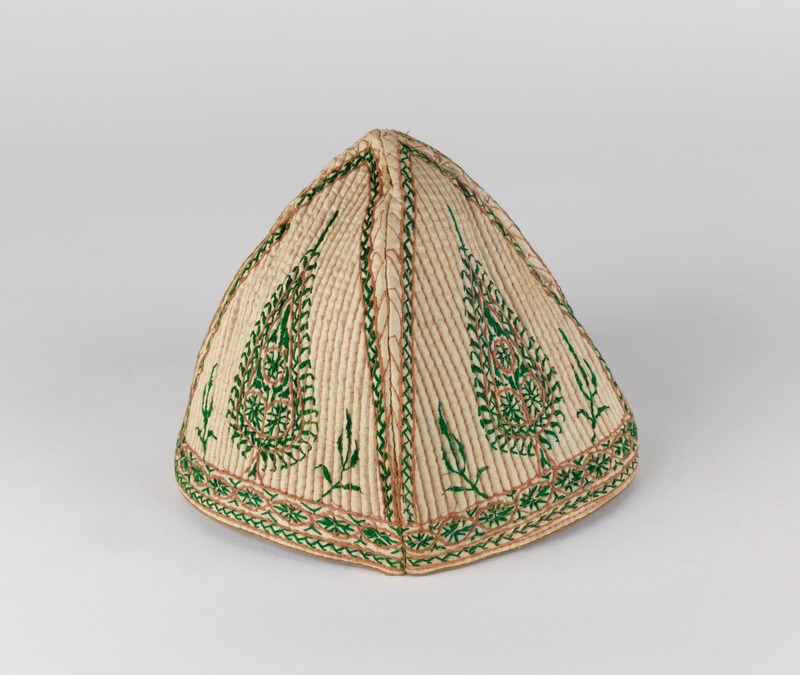
|
| 19th century Persian coat of hand-printed cotton. Boteh in off-set rows. Accession number CI40.20.9. Metropolitan Museum of Art. | 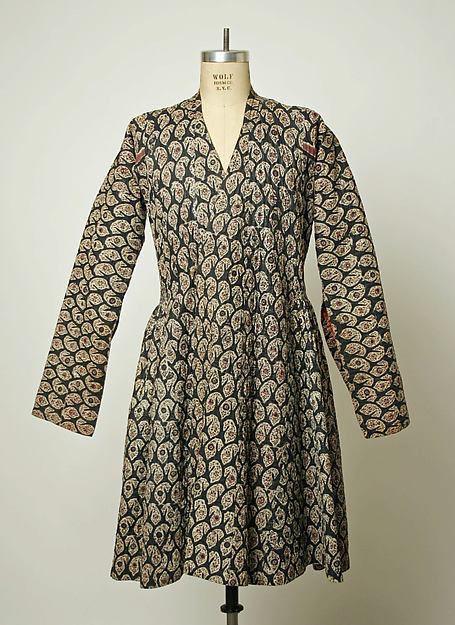
|
| 19th century Persian jacket of woven silk and metal thread. Lining of hand printed cotton (qalamkar) with floral boteh in off-set rows. Accession number CI40.20.9. Metropolitan Museum of Art. | 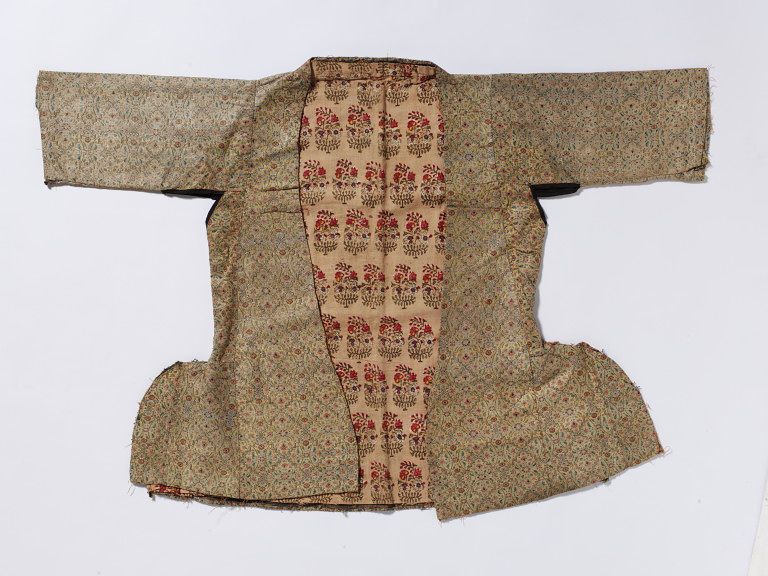
|
| 1840-1890 Persian fabric of tapestry woven wool, twill tapestry. "Black ground with a dense pattern of left facing botehs in offset rows with undulating stems running between the botehs from lower right to upper left." Large boteh contain flowers and little boteh. Weft of "dark red, red, blue, light blue, orange, green, black and white wool". Boteh in off-set rows. Fragment size: width 21.85"; height: max 22.83", min 17.9". Museum number: T.698-1994. Textile Museum, Washington, DC. | 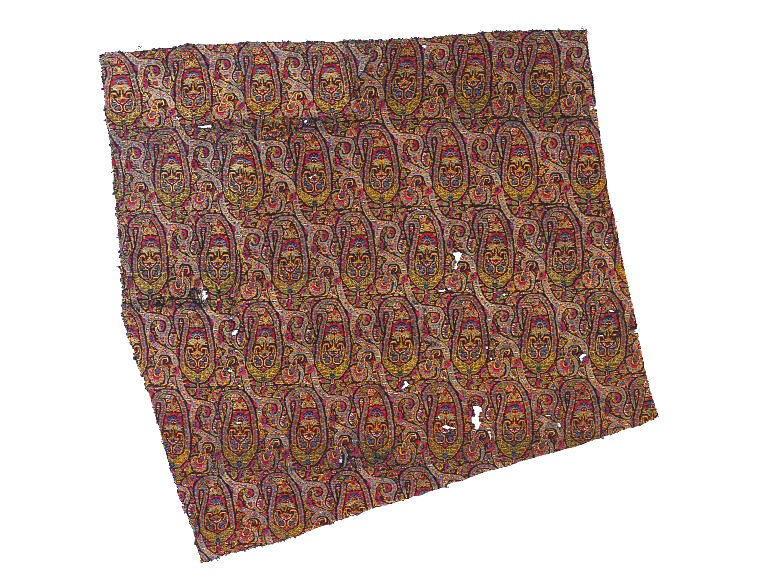
|
| 1854 portrait of Prince Ardashir Mirza, governor of Tehran. His red fur-lined coat is patterned with boteh. | 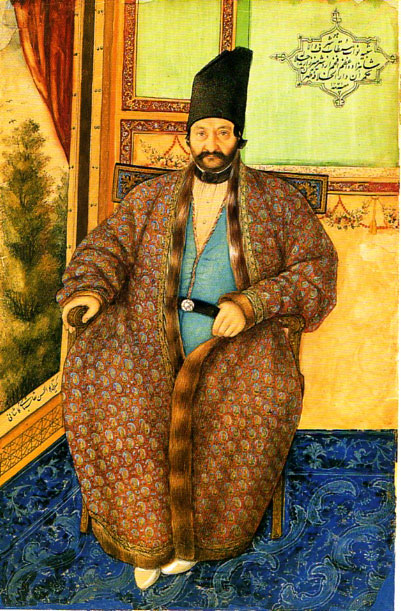
|
| Circa 1880 Persian Kerman Shawl woven of fine wool. Boteh in off-set rows with larger facing left and smaller facing right. Size: 55" x 34". | 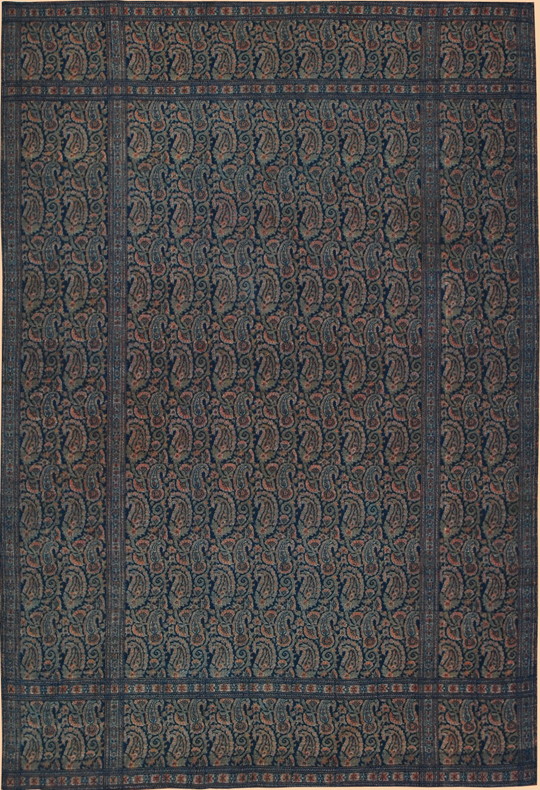
|
| 1922-23 silk brocade dress. Navy ground with multi-color flowers and rows of boteh. from Augusta Auctions website | 
|
| 1939 Persian silk brocade with golden thread. Boteh in off-set rows. Designer: Master Reza Vafa Kashani. Brocade weaver: Master Abdollah Salami. | 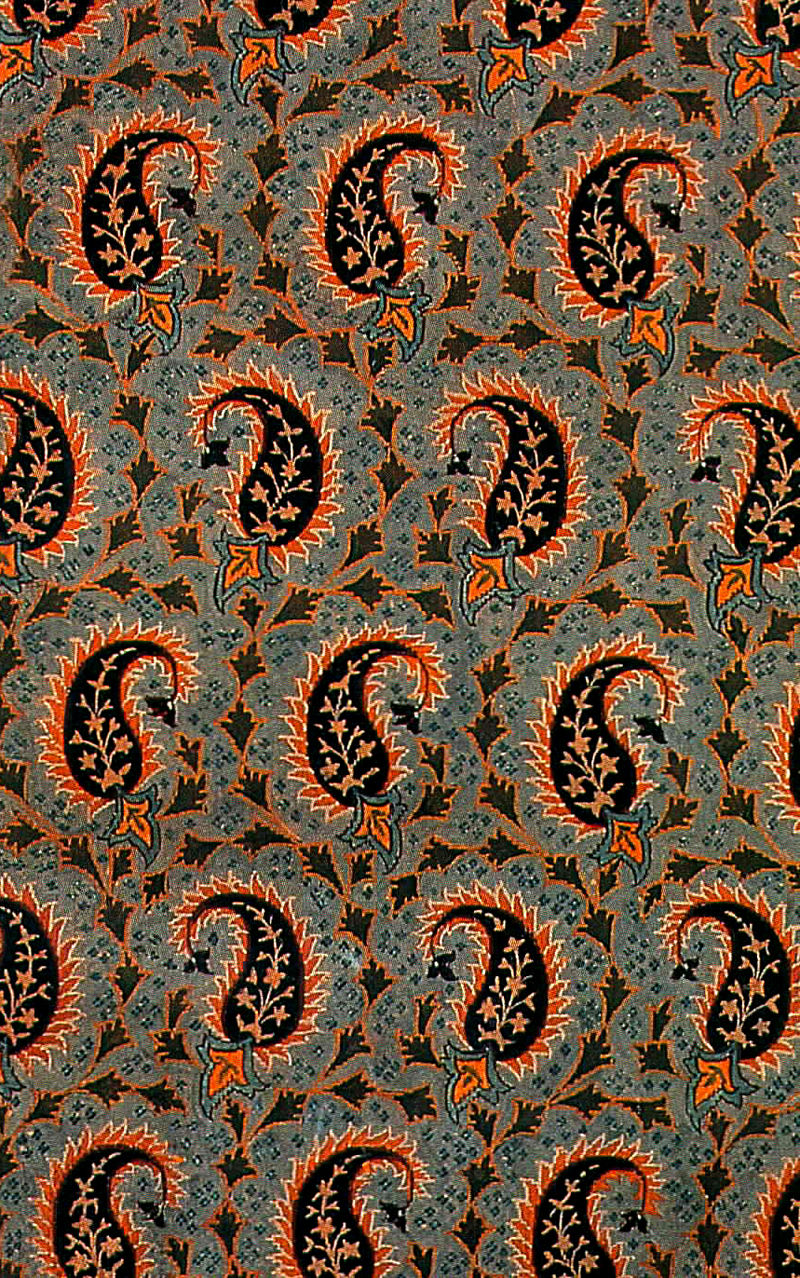
|
| 1963 Persian silk brocade with golden and silver thread. Boteh in off-set rows. Designer: Master Reza Vafa Kashani. Brocade weaver: Master Seyyed Hossein Mozhgani. | 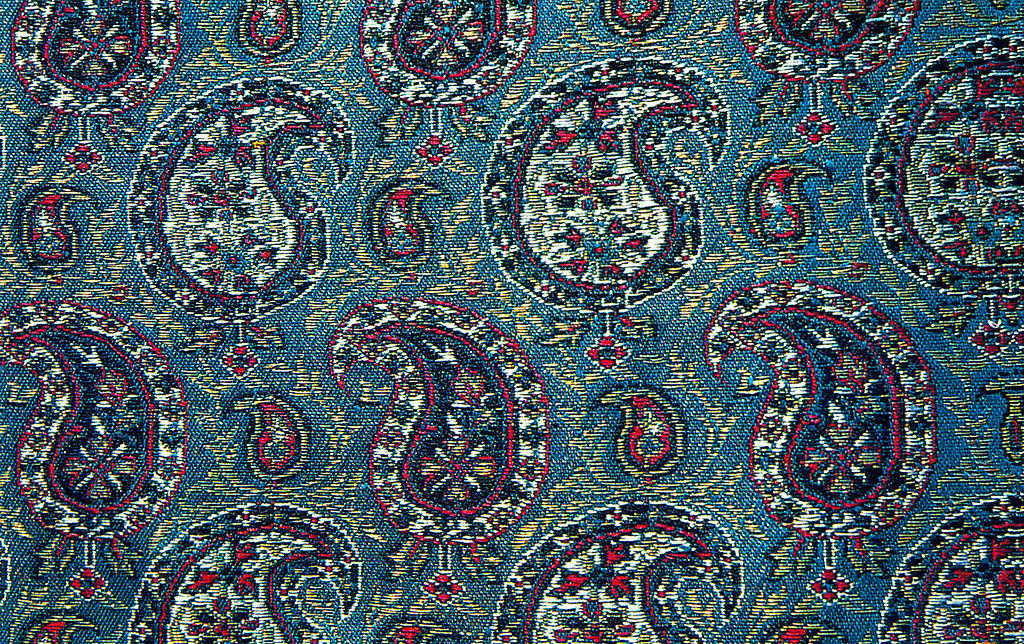
|
While the boteh motifs often face both left and right within a textile, they are all consistently oriented with a top one way and a bottom the other. | |
|
To Safavid Fabrics Questions? Comments? Suggestions?
You can write to me here. |
